
Public service design: 5 values which are key to successful teams
I spent 18 years in the civil service in roles spanning leadership, delivery, operations and policy, and was lucky enough to be at the heart of the UK government’s journey to digital.
I’ve worked on projects that have delivered exceptional outcomes and ones that have struggled to get off the starting blocks. Through this I’ve learnt that two of the biggest factors in success have been getting people and partners to work together effectively; and putting the right delivery foundations in place at the start.
Effective public service delivery, and a shared understanding of users needs and the design process are, of course, non-negotiables. But what really makes a difference is the way that people work together.
Here are some of the key values which I believe every team should share.
1 – Anticipate complexity
There is no such thing as an easy project in government. The breadth of internal stakeholders, user considerations, legacy technology, capability and at times capacity and funding constraints will always combine to create unforeseen complexity. This is compounded when you work across government departments where getting a consensus on vision, priorities, outcomes and ways of working makes it even harder.
Successful teams understand this. They take time to understand the problem(s) they are trying to solve, build a picture of constraints and don’t indulge the idea of just ‘quick wins’ or solutions when the requisite analysis or user research hasn’t been done. They take the time to understand the landscape they’re delivering in, and what could help or hinder them.
By anticipating complexity they respect the data, manage risk more effectively and can set a realistic vision for the scope of a project from the outset.
2 – Live with ambiguity
In a perfect world, teams would run on time, on budget and with every deliverable achieved neatly at each stage with little or no uncertainty.
The reality is that things rarely run smoothly or in straight lines and the best teams are constantly learning, iterating and adapting based on new information or something unexpected. Aged technology creates a roadblock. KPIs and targets can be critical for good governance and financial management.
However, sometimes it is only part way through the work that realistic targets can be set. The key remains understanding and delivering to the Service Standard.
Rigid commitments or deliverables can prevent a team from pivoting to a better idea, adopting a less risky timeline or investigating a solution which may be superior to the original proposition. They can also bake in dependencies which really don’t need to be there.
It’s critical then to flag from the start the importance of ambiguity, prepare for the possibility of change and encourage the practice of using new information and insight to refine targets and outcomes as you progress.
READ: How to design the best service design team for digital public services
3 – Respect failure
No-one starts a piece of work expecting it to fail, but I believe every team should approach their work with a healthy respect for failure.
At the start of a project, one of the methods I have used to evaluate a project team – internal and external – is to ask from the outset about where a project might fail and how they will respond to failure.
An environment where people talk openly about risk will allow you to think about and address emerging issues before they become so big they undermine a project. This approach will also ensure teams don’t fall into the trap of optimism bias.
Early failure should be seen as a healthy outcome from a design process which is followed well. Where budgets spiral, complexity increases and the business case weakens, walking away from sunk costs can save money and free resources and people for other opportunities. The key is iteration and applying learning.
4 – Work out of your comfort zone
If groupthink is the enemy of successful projects, then working outside of your comfort zone is a way to overcome it. This means embracing diversity and difference in every sense.
While the case for including people from diverse backgrounds with different life experiences is well made, there is still a way to go on the level representation of such groups on project teams. We need to make sure this happens.
Extend this thinking to your suppliers: hire external teams who are different from the norm and look for new or emerging partners who can challenge prevailing thinking, process or practise.
It’s important to bring and value differences to the way you work. One of the unintended consequences of our post-pandemic work eco-systems is that sometimes we are more insulated than before from new ideas and people. Government services are designed for everyone so the more representative teams are the better.
This may mean that we need to take time to move from behind a screen, meet colleagues from across government, freshen up the way teams are brought together. At times we must also go back to some of the more immersive face-to-face problem-solving workshops that were a feature of pre-pandemic life.
Together these actions will ensure you and your team’s approach challenges with fresh perspectives, energy and ideas.
5 – Trust and empower people
The combination of the high visibility of public sector projects, the amount of taxpayer’s money involved and the impact on end users of a successful – or unsuccessful – project means that service design for the government brings a unique set of pressures for civil servants. When teams work together effectively – for each and with each other – they are better able to withstand that pressure.
From the outset you need to instil a ‘one team’ ethic where everyone involved – external suppliers and civil service colleagues – feels like they are working to achieve the same shared goal and outcomes rather than simply fulfilling a statement of work or set of tasks.
It’s also key that learning and development remains fundamental at a team level and for each individual. You need to know everyone’s strengths or give them confidence that they will have your support as they develop knowledge. You also need to bring in partners who are great at different things from you and your team.
When the going gets tough, a habit of partnership working and shared values will ensure you get the advice and support you need to succeed. This is something which will only pay dividends if you trust and empower people from the start.
READ: How mission-led teams can reduce waste in digital public services
Concluding thoughts
Setting the team ethos and the right foundations are crucial for successful delivery. But it’s also critical that teams and leaders think carefully about the problem they are trying to solve before exploring solutions.
By all means, they should think big, be ambitious and be creative. But above all they should aim to deliver value to users early and iterate rather than the big bang.
It’s only by leaving egos at the door that we can truly realise the potential of people, products and the services we build. We must collectively aim to be better today than we were yesterday.
If you would like to discuss any of the points I’ve raised here in more detail, please get in touch.
-
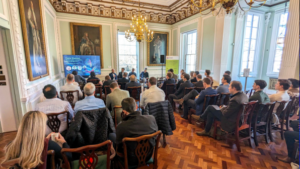
Truth, trust and transformation — 4 key takeaways from Zaizi’s AI in government event
-
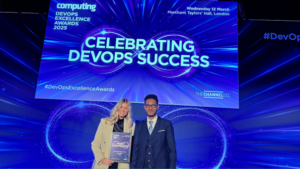
Zaizi talent shines at Computing DevOps Excellence Awards 2025
-
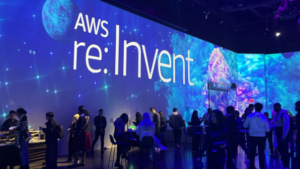
Advancing DevOps practices with AI —lessons from AWS re:Invent
-
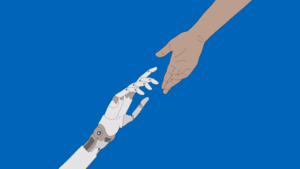
Paris AI summit: Navigating the AI landscape and how SMEs can help UK government
-
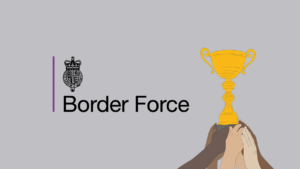
Border Force wins Global Customs Innovation Award for ScanApp — a solution Zaizi helped build
-

How Zaizi’s user-centred approach won the trust of border officers
